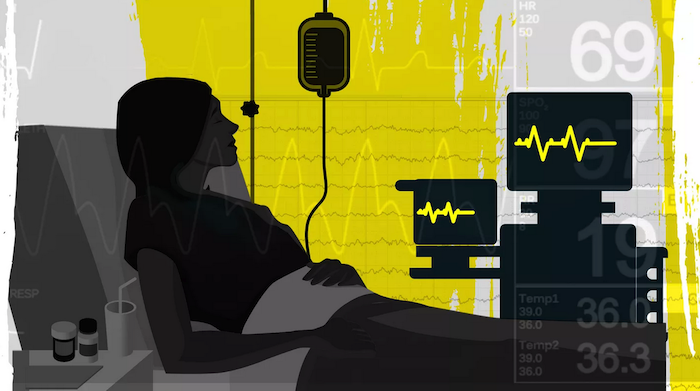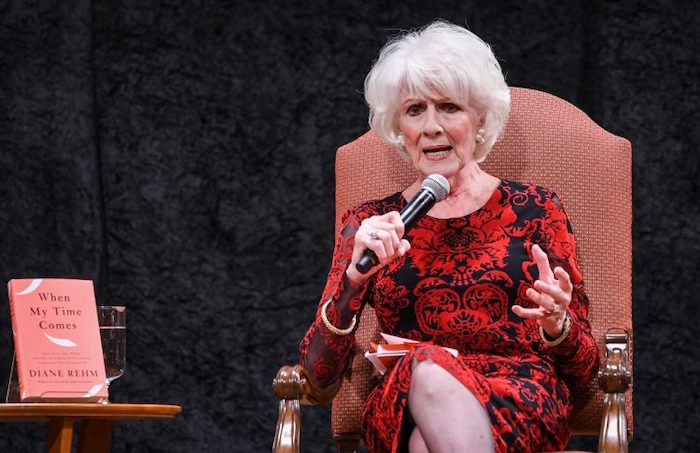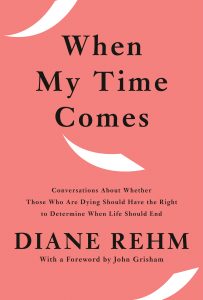The coronavirus pandemic highlights how much we need to have conversations about end-of-life care.
By Sunita Puri, M.D.
Joseph, a man in his 70s, has been on a ventilator for two weeks. His heart, lungs and kidneys are failing. Though I know these facts about his physiology, I will never see him up close. I can only glance at him through clear glass doors, the ventilator and dialysis machine obscuring his face. The coronavirus has limited the number of physicians who can enter his room.
I cannot sit with Joseph’s wife and children to ask what sort of medical care he would want. I cannot read their body language, lean in toward them or offer a tissue as they cry. Now, because of the coronavirus, most hospitals don’t allow families to visit.
Instead, I met Joseph’s wife and children on a Zoom conference call.
“I want to apologize to you for being a face on a screen,” I began. “I wish we could talk about this in person.”
They nodded together, their eyebrows furrowed.
“I wish that I had better news to share,” I said. “Unfortunately, despite our very best efforts to support Joseph’s heart, lungs and kidneys, his body is showing us that he is getting sicker.” I watched, disembodied from a distance, as they hugged each other and cried.
His wife told me that Joseph had never talked with her about what he would want in this sort of situation. “I don’t know what he would say,” she said. “We didn’t think this would ever happen.”
Americans are not good at talking about death. But we need to be prepared for when, not if, illness will strike. The coronavirus is accelerating this need.
In Italy, doctors have had to make excruciating decisions about which patients receive ventilators, which are in short supply. In the United States, we are already facing shortages of life-sustaining therapies; doctors will need to make these same difficult decisions.
Our collective silence about death, suffering and mortality places a tremendous burden on the people we love, and on the doctors and nurses navigating these conversations. We should not be discussing our loved one’s wishes for the first time when they are in an I.C.U. bed, voiceless and pinned in place by machines and tubes.
Talking about death is ultimately talking about life — about who and what matters to us, and how we can live well even when we are dying. Rather than being motivated by fear and anxiety, we can open these discussions from a place of care and concern.
Here’s how I opened a conversation about death with my own parents earlier this month: “Mama, Daddy, seeing a lot of people getting really sick with the coronavirus made me think of both of you. None of us knows what’s around the corner, and I want to be sure I know what you would want for yourselves when you get really sick,” I told them. “I want to be your voice so that I can make decisions for you, not for myself.”
“If I needed a ventilator for a short time, or dialysis, that would be OK, but I would only want treatments that would help me stay independent,” my mother replied.
My father nodded in agreement. “My main hope is to be with all of you. If I will lose my ability to be myself, if my mind will never be clear, please just let God take me,” my father told me, stirring his tea.
Though it is a daunting task, talking about death offers opportunities for grace and connection with our loved ones. Last summer, I watched as a patient’s brother told her for the first time how much he loved her, just before she told him she was choosing hospice instead of a clinical trial. In the fall, I walked the wife of a patient into her husband’s hospital room, where they renewed their wedding vows amid cake, balloons and glittery confetti.
“This was what she always wanted,” he told me when we discussed what was most important to him. “I put it off for so long, but I have to do it before I die.”
Working in the hospital with patients suffering from the coronavirus made me ask myself the questions I hope you will ask yourselves and the people you love:
- What is most important to me in my life? (My family and pets, and the ability to write and doctor).
- What makes my life meaningful? (My work; dancing; being outdoors; being with my loved ones).
- What sort of quality of life would be unacceptable to me? (Being permanently bed-bound or neurologically devastated; indignity and suffering; depending on others for personal care).
- Who is best positioned to speak on my behalf? (My brother).
- Who would I not want involved in decision making? (Family living abroad).
- Would I want to undergo C.P.R. should my heart stop? (Only if the issue leading to the cardiac arrest is reversible. If my heart stopped even when I was being sustained on life support machines or dying from an incurable disease, then I’d prefer to die peacefully rather than with C.P.R.).
- What would bring me comfort if I were hospitalized? (Pictures of my family; music I love playing in my room; prayer).
This is by no means an exhaustive list of questions. The Conversation Project offers many more, as well as guidance on how and when to begin these conversations. The Serious Illness Conversation Guide gives health care providers a road map of when and how to start asking patients about dying. Both resources offer the compassionate, incisive — and often unfamiliar — language required for us to ask the right questions and empower our loved ones to share specific, honest answers.
Confronting our fears about death — having a conversation about it in frank terms — can be alternately terrifying and tender. Yet knowing how to honor our loved ones’ wishes when they can’t speak for themselves is one of the bravest and most loving things we can do.
Complete Article ↪HERE↩!










